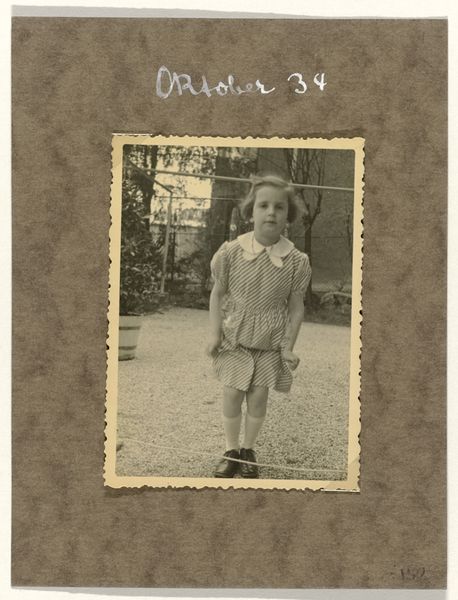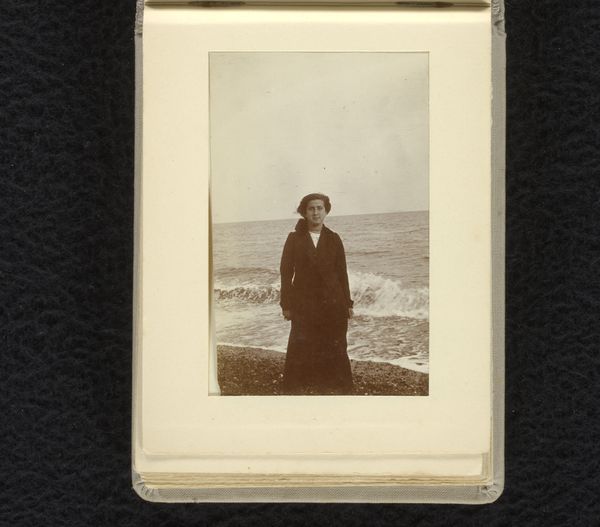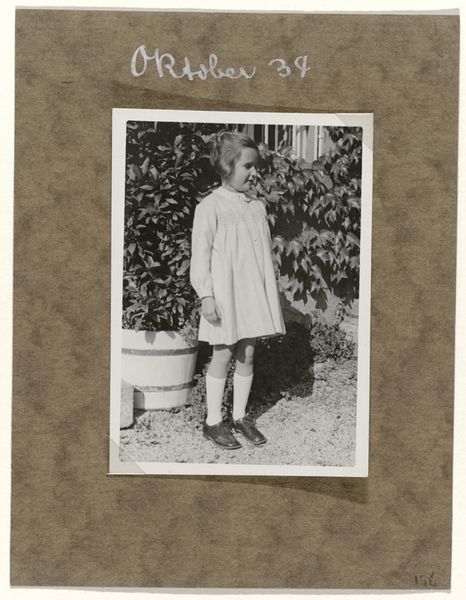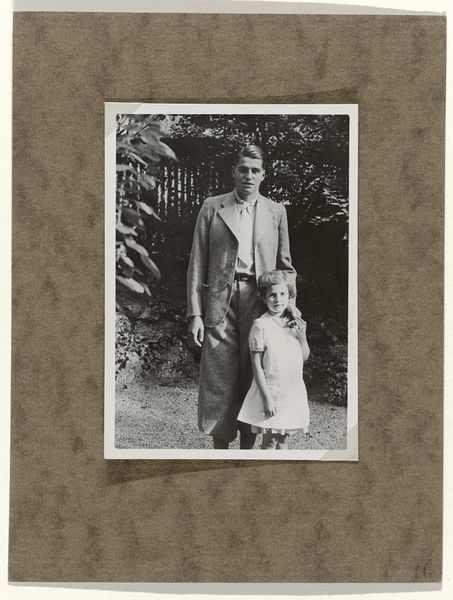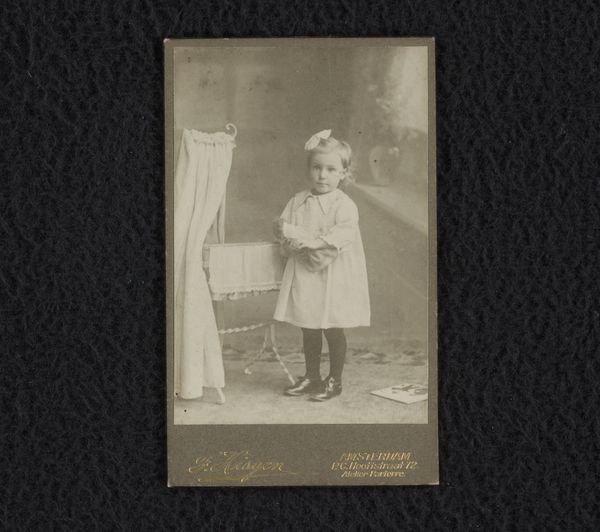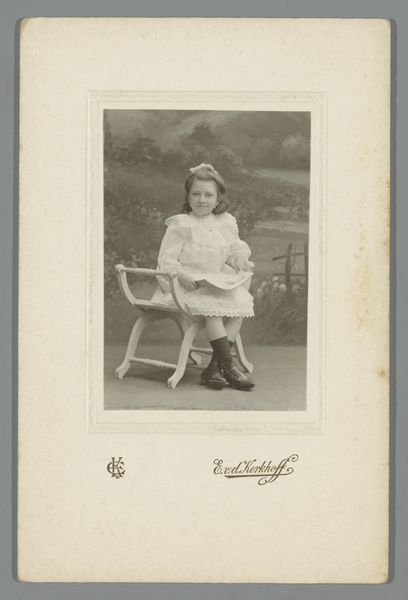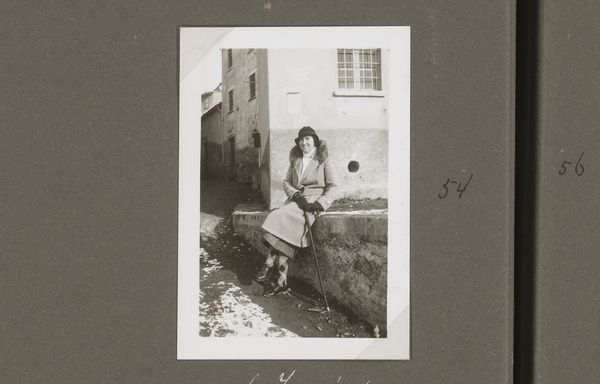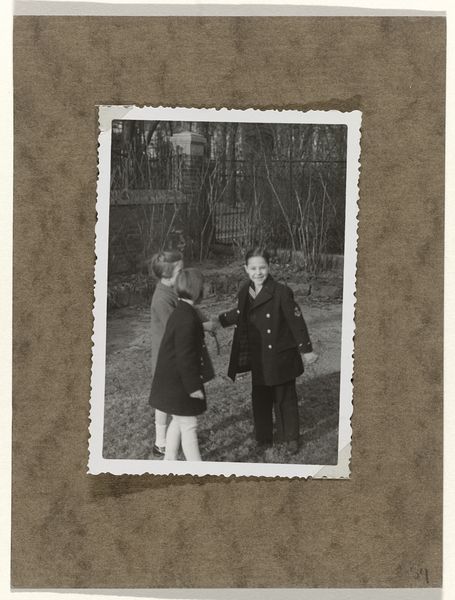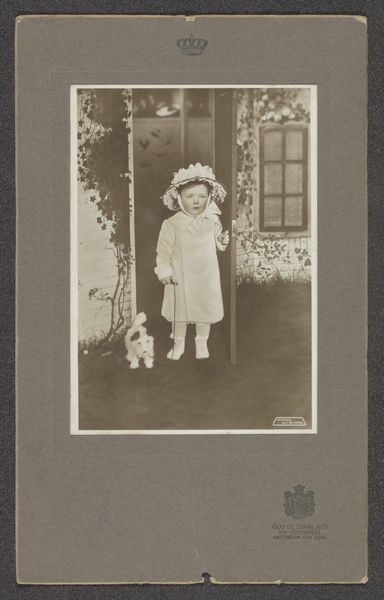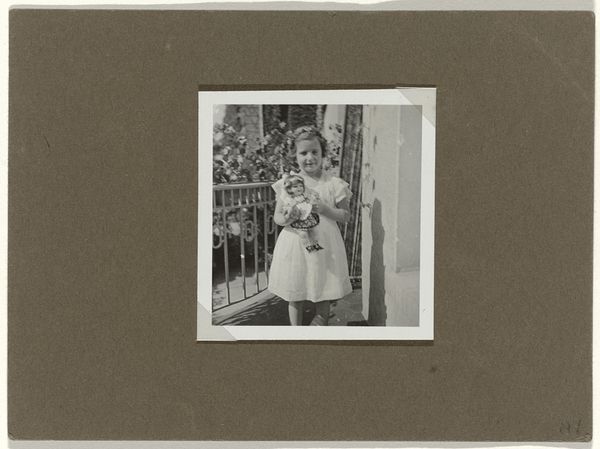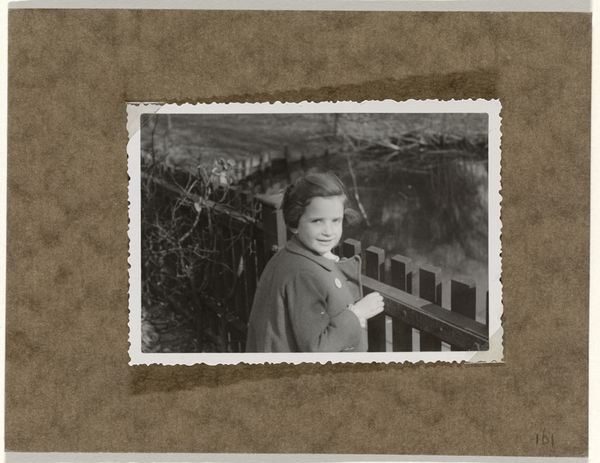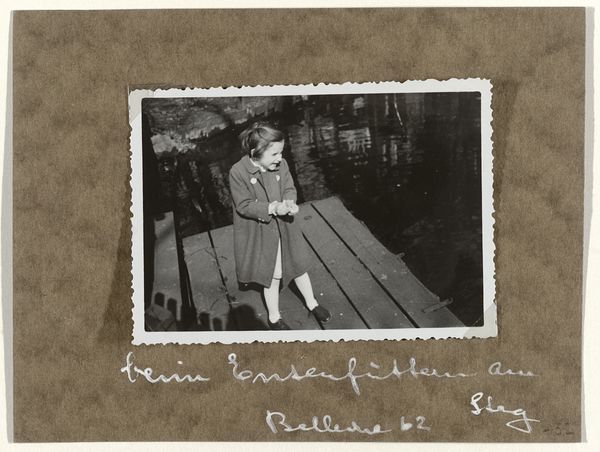
Isabel Wachenheimer aan de rivier de Alster tijdens het bezoek van Isabel Wachenheimer aan haar oom Willy Moos in Hamburg Possibly 1935
0:00
0:00
photography
#
portrait
#
print photography
#
archive photography
#
photography
#
historical photography
Dimensions: height 90 mm, width 65 mm
Copyright: Rijks Museum: Open Domain
This photograph captures Isabel Wachenheimer by the Alster River during a visit to her uncle Willy Moos in Hamburg. Here, the river's edge becomes a symbolic boundary, a recurring motif found throughout art history. Water often represents transition and the subconscious; consider Ophelia drifting in the river, her fate sealed by the currents. The innocent child, a symbol of purity, stands at this threshold, her gaze fixed. This evokes the Roman concept of "puer aeternus," the eternal child, forever on the cusp of adulthood, a state of both potential and vulnerability. This same psychological tension is palpable in many Renaissance portraits of young nobles. Notice how the Alster reflects the sky, blurring the line between reality and reflection. Like Narcissus, we are drawn to our own image, seeking meaning in the mirrored depths. The river flows, ever changing, reminding us of the relentless passage of time and the cyclical nature of life itself.
Comments
No comments
Be the first to comment and join the conversation on the ultimate creative platform.
